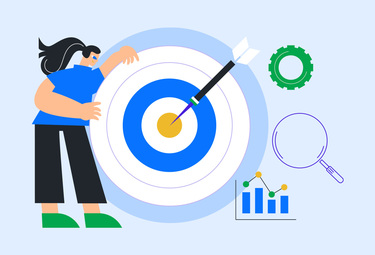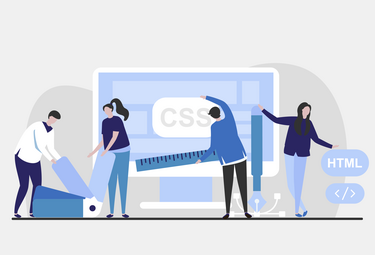Technology is constantly and rapidly evolving, causing customers of various brands to expect increasingly personalized interactions. Customized communication and attention to detail have become important factors for a companies' competitiveness. Many of them are adapting to customer expectations by looking for solutions to create personalized experiences across multiple channels. For this reason, a key element of many business strategies is managing digital customer experiences (CX). They are all of the interactions that occur between them and the company, which cause them to have certain feelings about the brand. There are a number of channels and tools for designing and managing CX, but today we’re putting special attention to two concepts - CMS (Content Management System) and DXP (Digital Experience Platform). The former system is commonly used to manage content on websites. The latter, on the other hand, is an extension containing more powerful features and offering comprehensive tools to increase efficiency in developing CX.
Content Management System
These systems control mainly text, multimedia or images. They are accessible even to beginners, and publishing content using them is a simple process - it allows you to easily create, edit and update content, without having to code. A CMS can also allow you to personalize your site, with the help of various themes and plug-ins. It also facilitates collaboration between users through shared image and document libraries. A basic CMS is a good choice for smaller companies and start-ups - it will work well when a company does not need advanced marketing tools. Implementation examples include blogs, knowledge bases, online portals, online stores and news sites. CMS systems can be generally categorized as:
- SaaS (Software-as-a-Service) - software in which access to the application is usually obtained through a browser or API, and installation on a server is not required. It is necessary to pay a subscription fee for its use. In this service, all technical and infrastructure issues are managed by the provider,
- Open Source - a system with its code made available to users free of charge, which can be edited according to the license. It is distinguished by easy accessibility and the ability to install additional plug-ins to develop existing functionality,
- Proprietary CMS - software developed for the needs of a particular client to be tailored to a particular project. However, when deciding on such a system, one should bear in mind that it is often a more expensive solution.
It's also worth mentioning that CMS systems can provide regular updates and security patches to protect sites from various attacks and web threats. This kind of software makes managing websites with their help much more effective and efficient.
Digital Experience Platform
According to data presented in the Digital 2022 Global Overview report, more than two-thirds of the population uses mobile devices, with the number of unique users reaching 5.31 billion. Compared to 2021, this is an increase of more than 95 million people with smartphones. For this reason, in an era of increasing digitization, companies shift their strategic focus. They must focus on CX design, and DXP is helpful in managing every step of the process - it's a more powerful system than a CMS, especially when it comes to analyzing data.
The system collects accurate real-time data on user behavior - how users navigate the site and which areas they are most interested in. The software analyzes these activities, and then creates content and delivers it to their devices, allowing the content to be efficiently tailored to a given user. With features such as segmentation (dividing users into groups with similar tastes and behaviors) and recommendations (generating and delivering recommended content to a specific customer based on their preferences), DXP enables the creation of personalized CX, tailored to the needs and requirements of each user. They then receive content that is designed to encourage them to interact with the brand, such as signing up for a newsletter, clicking on an ad or making a purchase. The software enables companies to accurately analyze customer contact so that each subsequent interaction can be even better. DXP is usually a multi-module solution that can be easily enhanced with new features and easily customized to meet specific needs. DXP platforms also have a flexible architecture, so any changes to the backend or frontend can be made independently and they don’t disrupt the rest of the system. They also offer the possibility of integration with other systems, such as payment systems or e-commerce platforms, through dedicated APIs. DXP combines three specific areas:
- User Experience - the experience customers have when using a particular company's services, such as a website, an app or contacting support,
- Processes - the experience provided by a interaction with the company, such as the purchases,registration or onboarding,
- Content - resources that are pushed via various channels and applications offered by the company.
DXP thus allows companies to control every element of customer contact - they make it possible to check whether interactions are consistent in terms of content, style and logic.
Differences between CMS and DXP
| Criteria | CMS | DXP |
| Functions | Content management, basic tools for content creation, editing and publishing | Creating end-to-end digital experiences, multi-channel management, system integrations |
| Data analysis | Limited analytical functions or required integration with other analytical tools | Advanced analysis tools to better understand the audience |
| Personalisation | Basic, consisting of providing different content depending on user segmentation | Advanced, using demographics, user preferences, etc. |
| Communication channels | Mainly content management on websites | Content management on various communication channels, e.g. apps, social platforms |
| Scalability | May not be optimized for large scale and performance | Typically scaled to support sites with high user flow |
How does the introduction of DXP affect the customer experience?
By providing customers with a better experience when they interact with a brand, a DXP platform enables companies to improve their digital transformation process. Software that provides consistent data on customers and their behavior is particularly useful in several areas:
- customer service - thanks to tools that enable self-service (e.g., live chats), DXP supports service processes - customers can get help and solve problems on their own, which is a significant time saver for both them and the company,
- personalization - DXP facilitates the creation of customized content based on collected data - information about customer behavior and preferences is crucial so that personalization processes can lead to increased customer engagement,
- consistency - the software enables the creation of integrated customer experiences across different communication channels - so that customers can use the same features and content on different platforms,
- data - collecting and analyzing data is one of DXP's most important functions. Advanced tools often allow to segment users and thus derive conclusions about their needs and requirements,
- marketing campaigns - with the help of DXP it is possible to create targeted marketing content and offers for selected customer segments, and then to track the effectiveness of these activities,
- testing - DXP allows testing to optimize CX - A/B testing is often used to compare different variations of a website's layout to come up with the best solution.
By collecting and analyzing data, DXP software is an ideal tool to better understand users, allowing marketers to optimize their operations and deliver personalized content, resulting in higher customer satisfaction and better company performance.





